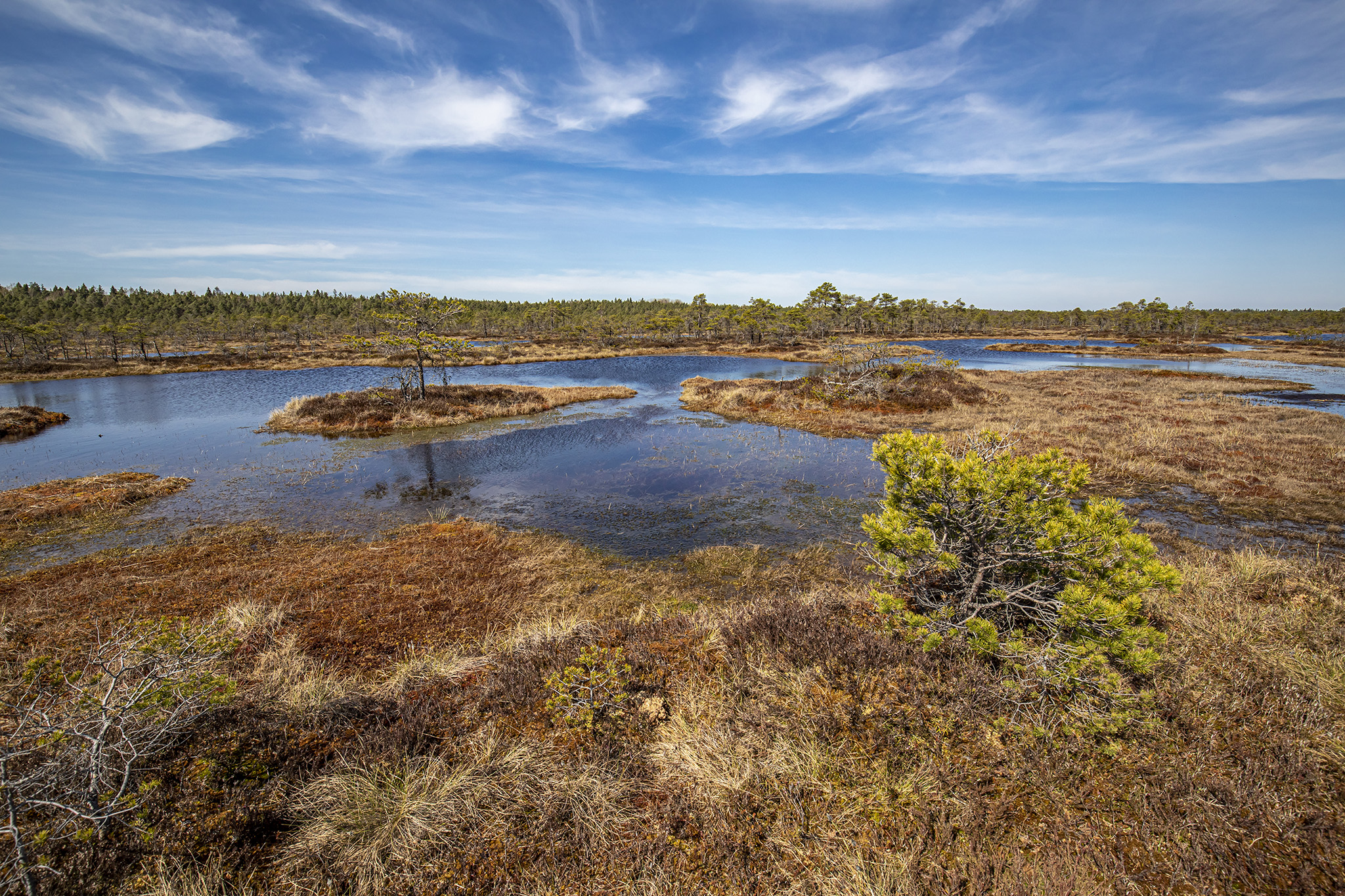A bog is a type of wetland ecosystem characterized by acidic, waterlogged conditions and an accumulation of peat. Here are some key points about bogs:
- Formation: Bogs typically form in depressions or shallow basins where water accumulates, such as old glacial lakes or abandoned river channels. They develop when waterlogged conditions slow the decay of plant matter, leading to the accumulation of partially decomposed organic material known as peat.
- Hydrology: Bogs are fed primarily by precipitation, with water often acidic and low in nutrients due to the accumulation of organic acids from decaying plant material. They receive most of their water from rain rather than from groundwater or surface runoff.
- Plant Life: Bogs are characterized by unique plant communities adapted to the acidic, nutrient-poor conditions. Common plant species found in bogs include sphagnum mosses, sedges, heathers, carnivorous plants like sundews and pitcher plants, and stunted trees such as black spruce and tamarack. These plants have specialized adaptations to survive in waterlogged environments, such as air-filled spaces in their tissues to buoy them above the water level.
- Wildlife: Bogs provide habitat for a variety of wildlife, including amphibians, reptiles, birds, and mammals. Species such as frogs, salamanders, dragonflies, and various bird species may depend on bogs for breeding, feeding, or shelter.
- Human Uses: Historically, bogs have been used for peat extraction, primarily for fuel. Peat is formed over thousands of years and can be harvested for use as a fuel source or as a growing medium for horticulture. However, the extraction of peat can disrupt bog ecosystems and contribute to habitat loss.
- Conservation: Bogs are considered important ecosystems due to their biodiversity and their role in carbon sequestration. Peatlands store vast amounts of carbon, and the preservation of bogs can help mitigate climate change by preventing the release of stored carbon dioxide into the atmosphere. Efforts to conserve bogs often include habitat protection, restoration projects, and sustainable management practices.
Overall, bogs are fascinating and ecologically important ecosystems that support unique plant and animal communities. Their conservation is essential for maintaining biodiversity, preserving carbon stores, and sustaining the services they provide to both wildlife and humans.
Visited 876 times, 1 visit(s) today
Views: 1230
Subscribe to the newsletter:
